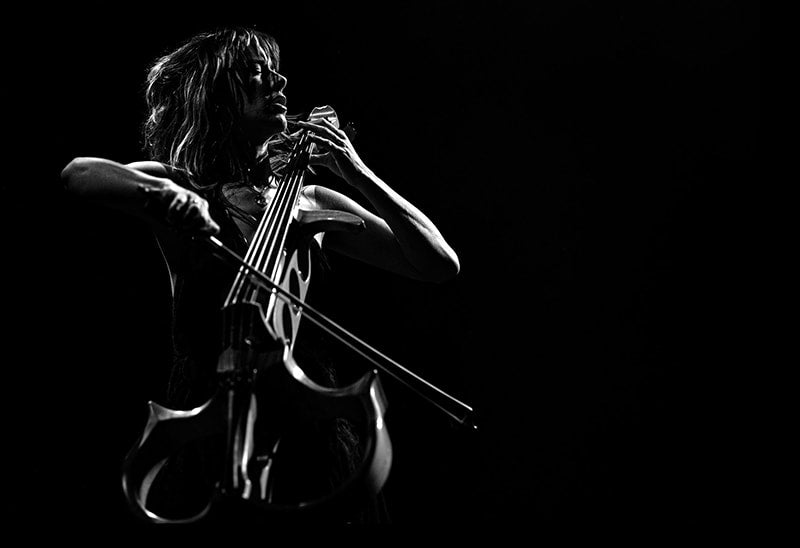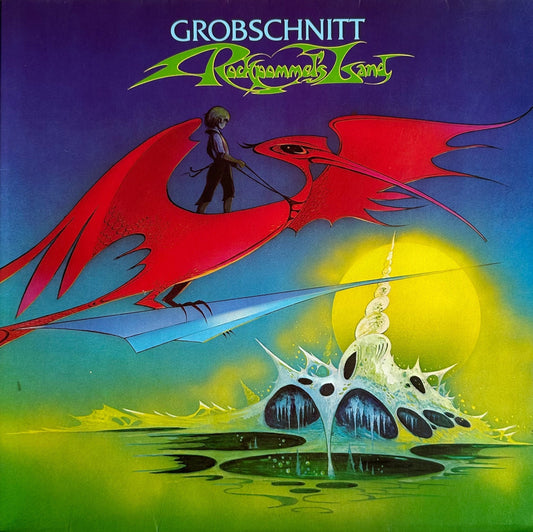Classical, rock and progressive music influences, percussive, looping and other ingenious cello techniques, as well as unusual collaborations are just some of the eclectic approaches Jo Quail takes to the cello. Jo’s techniques and impeccable timing bring life to her compositions for film, and her live performances. Her inimitable style and grace and layered soundscapes evoke a rich palette of emotive tones. How has she created her art?
Russell Welton: Every musician goes through phases of development. What time period saw your greatest advancement as a cellist, and what do you ascribe this to?
Jo Quail: This is a fascinating question to try to answer! I’ve been playing cello since I was six years old, and as such it’s a continuous advancement. The concept of technical advancement is not so easy to pick out because technical challenges are often things that are mastered over a period of years, and then worked on continuously throughout our playing careers. It’s a retrospective concept in many ways, and difficult to pinpoint the exact transition from “impossible” to “possible.”
Playing cello, or indeed any instrument, is an integration of physical ability and mental approach, and personally I feel that there is no uncoupling of these. There have been several moments when I’ve “understood” something suddenly, or looked at something a different way, and this has changed my entire playing approach. One of my teachers once said to me that playing the cello is the art of making something difficult into something easy. So, if you have a technical challenge, try to work at it from a musical perspective, and similarly, if you have something that concerns you with phrasing or emotional intent, try to see what is going on technically, as one side will always inform the other.
 Jo Quail. Photo courtesy of Peter Troest.
Jo Quail. Photo courtesy of Peter Troest.I would say that advancement comes really from emotional maturity, and I was a pretty late developer here! I didn’t feel truly connected to my cello for many years, even after my degree, and it was only after a few rites of passage in [my] non-musical life that I returned to my cello, and then felt such a strong relationship develop. I used to [just] feel [like], “I picked up my cello and leaned it against me.” Now I feel it is part of me.
I guess therefore [that] advancement is both technical and psychological, and I think the larger component here is psychological; this is what separates machine (or MIDI!) from the blood, breath and bone of art.
RW: How did you come to develop such an expressive range of techniques from the cello?
JQ: The cello is a voice. There are many things this instrument is capable of saying, we are all familiar with the breadth of emotion flowing in, say, the Elgar [Cello Concerto], or the light and joy in either Haydn concerto, and there is much more in addition. I guess it’s like language really. Language evolves naturally and therefore so does the language of the cello. I’ve found my particular language techniques through traditional playing, performing a lot of contemporary music and working with other composers, also through improvisation, and perhaps most importantly, through experimentation. To give some examples: I’ll ask myself, “what happens if you bow too near [to the] bridge, bow behind [the] hand, [or do a] palm-mute pizzicato? Or, “I want to convey this or that – the way the light shines on a Barbara Hepworth sculpture – how can I ‘play’ this light?” If you then couple this (as I do in some instances) with electronic effects the results can be pretty expansive. I do use all my extended techniques within my solo acoustic compositions too, and the challenge then is how to score them!
RW: Do you have any advice in getting the most from your instrument’s depth of resonance and harmonic richness?
JQ: This is a two-fold question! From a cellistic point of view, yes. It’s what I tell my students. Sit and play long open strings, listen very carefully to the tone, find the very center of the tone. Know how it feels in your right arm, the position and speed of the bow, the weight of the hand and arm, the openness of the back and shoulders. You will feel it resonate through your body. Find this sound, try to find it every day, then employ left hand technique and try to find the same resonance in every position across every string as far as possible. Get to know your cello so thoroughly.
There are many ways to play the same thing on a cello, so it’s good to consider what string to play on, as you will be either enhancing or cutting some of the harmonic series depending on where you play. If you’ve got something [to play] in say the fourth position on the A string, if you move that on to the G string at the same pitch you will get a very different effect as there is much less string to resonate. This can be really useful and give very interesting effects in a studio setting but may or may not be quite so effective live.
Getting the most in a recording in terms of depth of resonance and harmonic richness depends a lot on the room, the microphones and the producer of course. I’m lucky to often work with producers who are highly skilled in recording strings or cellos particularly, but as a general sweep, a close mic will produce a lot of bow noise, but will give the clarity of sound, and an overhead [mic that’s more distantly placed] captures the greatest frequency range, [which] is my preferred sound if it’s a case of [having to choose] one or the other.
RW: When given a brief for composition, what provides the best sparks of imagination for your creativity?
JQ: In film music the brief from the director will be enough to start the ball rolling for me, but often there are aspects from the film itself that I take as a starting point. For example, a recent film I scored opened with [the sound of] a microwave oven, which had a pitch of roughly A flat, so that became my starting tonal point. I will usually watch various scenes and record my improvised immediate response in the first instance, as often that primary reaction reveals what becomes the DNA of the whole work.
In commissioned compositions outside of film, again it is the brief, and the immediate instinctive musical response that opens my imagination to the whole work. I was recently commissioned to write a piece of music exploring heaviness in classical music, from the perspective of metal (in very general terms) for the Roadburn Festival, and my immediate thought was instrumentation: trombones, bass trombones and as much orchestral percussion as I could get away with! I ended up writing for eight bones, two percussionists (with multiple tympani, concert bass, tam-tam, hand percussion and so on), piano, two vocalists, violin and cello.
RW: When creating “music for music’s sake,” what comes to your mind first, the melody or the rhythm?
JQ: Either – my manuscript books are full of short phrases, and my phone is full of me doing a kind of weird beatboxing to demonstrate a rhythm! I also find a lot of inspiration in words. I will sometimes write and then use a poem or piece of prose, and allocate pitches and/or note lengths within a system I devise to create a melody. I’ll sometimes go back over my notes and find that two apparently disparate ideas in fact combine to make the start of a new work.
I also find when I’m working with my electric cello that sound itself can create the start point. “Reya Pavan” is a good example of this. I knew what I wanted to say musically and I experimented with bowing a sound I’d previously created to be percussive (hit with the hand or bowed col legno) and when bowed, this sound opened a whole dark earthy palette, which became the canvas on which “Reya” was built.
RW: What would you describe is necessary to become an audio storyteller?
JQ: An openness or readiness to see [and] imagine the image or story, and [the] perseverance to translate it to sound. To have a firm idea at the outset, then permit oneself to let go of this, as the music may dictate the journey. To fully embrace juxtaposition in sound in the way that a forest may suddenly give way to a wide-open space, so music can translate both light and dark.
For me, I feel I must understand the intent in my composition, and then deliver this in performance with all the energy of this thought or story, whether live or recorded. This doesn’t necessarily mean thrashing around on stage – I have a piece for example called “The Breathing Hand” which is a chorale of sorts, and when I perform this, it is the stillest moment on stage for me, but there is an intensity I feel in the music, in the space between the sounds, the chordal sequence, the pauses between the phrases, and I feel a sense of purity somehow. It’s almost a kind of religious stillness for want of a better phrase. I hope this reaches my audiences when I perform [the] piece.
RW: Does your workflow vary according to the project, and do you get much opportunity to incorporate experimental approaches?
JQ: Very much, and yes! If it’s my own composition my work flow is a bit sketchy; I’ll get to things when I can, but can be as experimental as I desire. If I’m working for an artist, providing cello for a track, or writing for film, I will work within the time frame they specify, and it’s often much easier if this is a short period of time, as I can get things done with a deadline but if it’s more of a “when you’re ready” [situation] it’s a dicey move! If I know [the] artist [I’m working with] well, then I’ll know how experimental I can be, and sometimes I am asked to contribute purely because they know I’ll do something less-expected. It just depends on each project really. Other times I know what’s needed is some beautiful solid sweeping chordal strings, and that’s what I’ll do.
Part Two of the interview will appear in Issue 143.
Header image courtesy of Nick Hodgson.




